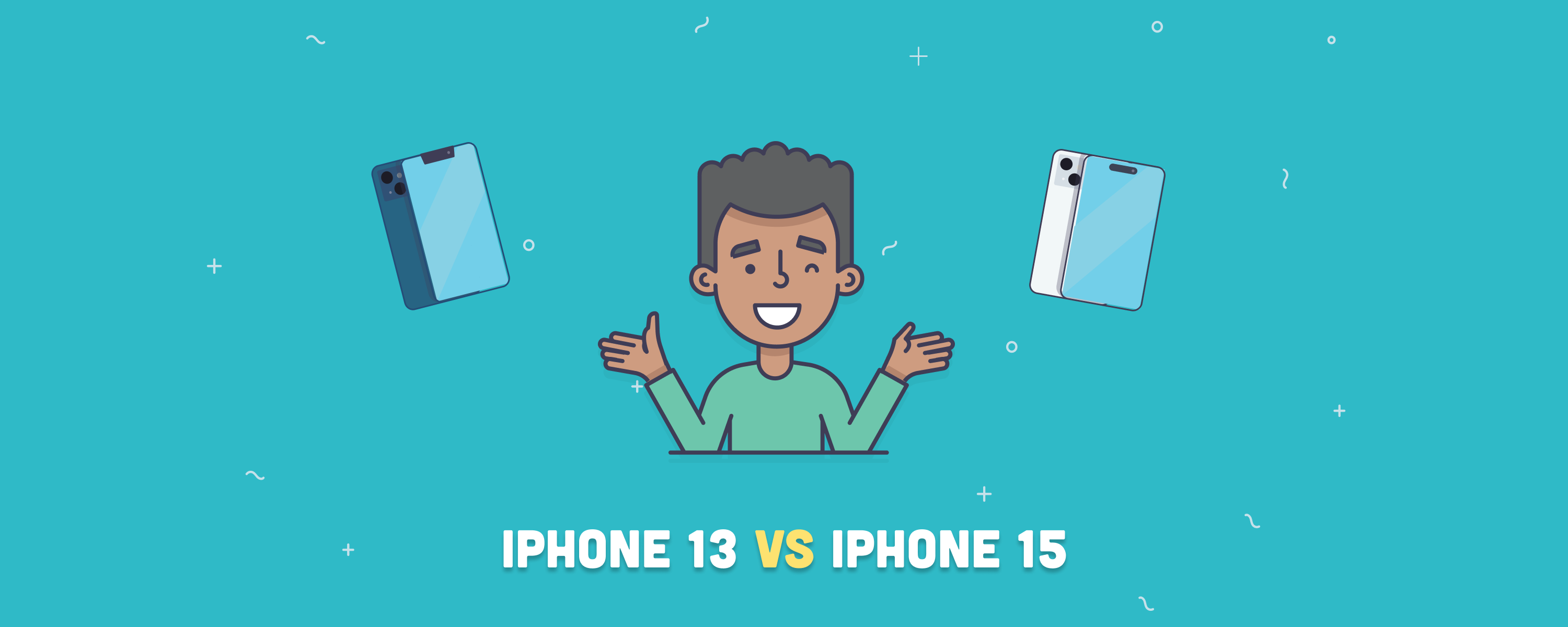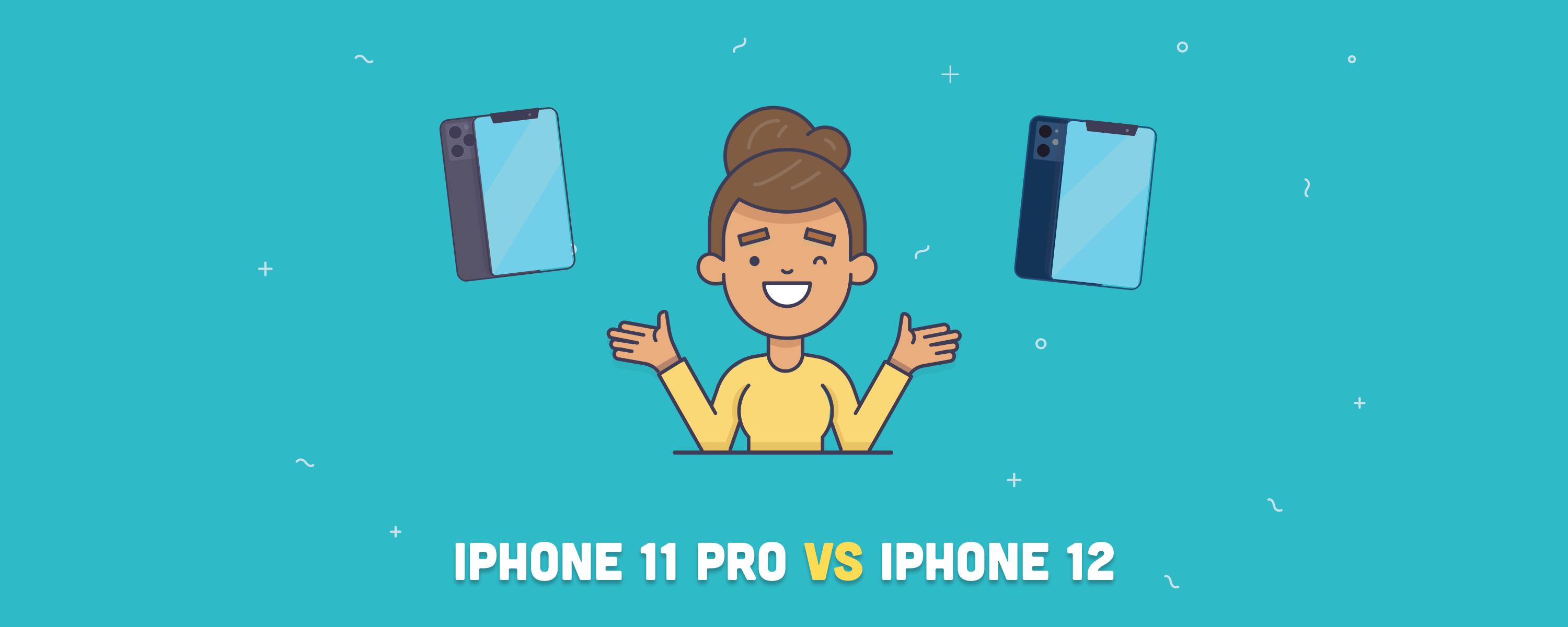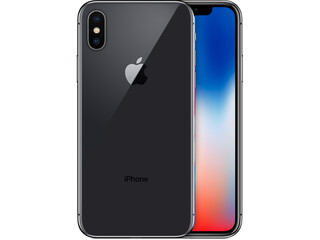When considering an upgrade for your smartphone, it’s essential to weigh the benefits against the cost. The iPhone 15 offers fresh features, but how does it compare to the iPhone 13? Is spending more on the iPhone 15 worth it, or is the 13 enough for your particular use? This blog post delves into the nitty-gritty of both models to help you make an informed decision.
Table of contents
iPhone 13 vs. iPhone 15: Specs comparison table
| Feature | iPhone 13 | iPhone 15 |
| Dimensions | 5.78 x 2.81 x 0.30 in 146.7 x 71.5 x 7.65 mm | 5.81 x 2.82 x 0.31 in 147.6 x 71.6 x 7.8 mm |
| Weight | 6.14 oz 174 g | 6.03 oz 171 g |
| Screen size | 6.1 inches (Super Retina XDR, OLED) | 6.1 inches (Super Retina XDR, OLED) |
| Resolution | 2532 x 1170 pixels, 460 ppi | 2556 x 1179 pixels, 460 ppi |
| Processor | A15 Bionic | A16 Bionic |
| RAM | 4 GB | 6 GB (LPDDR5) |
| Main camera | Dual 12 MP (Wide: f/1.6, Ultra-Wide: f/2.4) | 48 MP (f/1.6, wide) + 12 MP Ultra-Wide (f/2.4) |
| Front camera | 12 MP (f/2.2) | 12 MP (f/1.9) |
| Battery life | Up to 19 hours (video playback) | Up to 20 hours (video playback) |
| Charging | MagSafe and Qi wireless, 20W fast charging | MagSafe and Qi wireless, 20W fast charging |
| Storage options | 128 GB, 256 GB, 512 GB | 128 GB, 256 GB, 512 GB |
| Max OS compatibility | iOS 18 | iOS 18 |
| Connectivity | 5G, Wi-Fi 6, Bluetooth 5.0, NFC | 5G, Wi-Fi 6, Bluetooth 5.3, NFC, USB-C |
| Water resistance | IP68 (up to 6 meters for 30 minutes) | IP68 (up to 6 meters for 30 minutes) |
| Material | Aluminum frame, Ceramic Shield front, glass back | Aluminum frame, Ceramic Shield front, glass back |
| Additional features | Face ID, Dual SIM (nano-SIM and eSIM) | Face ID, Dual eSIM support, Dynamic Island |
| Price (new) | Starting at | Starting at |
| Price (refurbished) | Starting at | Starting at |
Reasons to choose the iPhone 13
- More cost-effective than the iPhone 15.
- Compatible with iOS 18.
- Excellent performance for everyday use like calls, browsing, and apps.
- Retains a high-quality camera for everyday photography.
- More than sufficient battery life for average users.
- A familiar design without the need to adapt to new interfaces or hardware changes.
- A smart choice for users not requiring cutting-edge technology.
Reasons to choose the iPhone 15
- Enhanced camera system with a 48-megapixel main sensor.
- Superior low-light photo capabilities for vibrant images in any setting.
- Dynamic Island introduces a new way to interact with alerts and activities.
- Brighter display for easier viewing in outdoor situations.
- A more powerful chipset ensures smoother performance and gaming.
- Future-proof with USB-C port compatibility with other devices.
- Advanced AR experiences with cutting-edge technology integration.
iPhone 13 vs. iPhone 15: What are the differences?
In this section, we’ll explore the cutting-edge features of the iPhone 15 and how they stack up against the still-impressive iPhone 13. Whether you’re a photo enthusiast, a tech-savvy user, or crave the brightest displays, discover why the iPhone 15 might be the better choice.
Design and build quality
Both phones showcase Apple’s penchant for elegant, rounded edges and a sleek glass back. The iPhone 15 brings subtle design enhancements to the table, amplifying its premium feel.
They are crafted with aerospace-grade aluminum frames and feature Ceramic Shield on the front glass, which is celebrated as tougher than any other smartphone glass. The iPhone 13’s glass with a glossy finish takes on a classic sheen. In contrast, the iPhone 15’s matte finish in color-infused glass promises a visually appealing and practical surface that is less vulnerable to fingerprints.
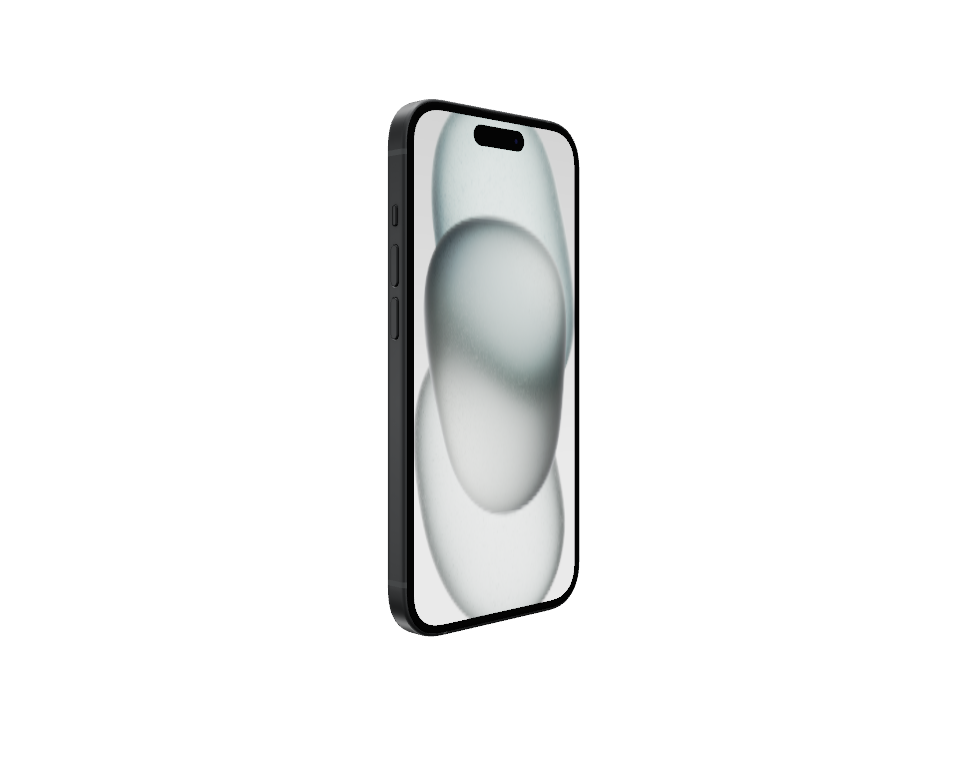
Image by: Apple
While both models maintain their IP68 water and dust resistance, the iPhone 15 comes in new sophisticated color variations like Blue Titanium and Natural Titanium. Notably, the iPhone 15 has also seen a slight reduction in weight to 6.14 oz compared to the 13’s 6.03 oz, which can make for a subtly lighter device in the hand.
Both devices are designed to withstand the rigors of everyday use in terms of durability, but the iPhone 15 might offer slightly better longevity due to its less fingerprint-prone back.
However, details like the iPhone 15’s Dynamic Island, a more modern take on the screen cutout compared to the notch of the iPhone 13, represent an innovation in design that’s both functional and aesthetically pleasing.
The new Action Button on the iPhone 15 further signifies its leap forward in design, potentially offering more streamlined and quick access to features or apps.
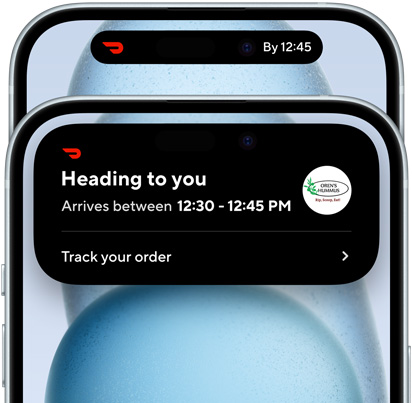
Image by: Apple
Display technology and screen size
The iPhone 15 marks a notable advancement in display technology compared to the iPhone 13, bringing several improvements that enhance user experience. Both phones feature OLED displays, but the iPhone 15 has a larger screen size and higher resolution, resulting in sharper images and more immersive content.
The iPhone 15’s screen also supports ProMotion technology with a 120Hz refresh rate, offering smoother scrolling and more responsive touch interactions compared to the 60Hz refresh rate on the iPhone 13. This difference is especially noticeable when playing games or navigating through apps, providing a more fluid experience.
Brightness levels and color accuracy have also significantly improved the iPhone 15. With a peak brightness that surpasses the iPhone 13, the iPhone 15 offers better readability in direct sunlight and more vivid color reproduction, making it ideal for media consumption and outdoor use.
Additionally, the iPhone 15 continues to utilize Ceramic Shield for enhanced durability, but with further refinements in display materials, contributing to a more resilient screen.
Processor and performance upgrades
The iPhone 15 introduces substantial processor and performance upgrades compared to the iPhone 13, primarily driven by the new A17 Bionic chip. This latest chipset offers a significant leap in both CPU and GPU capabilities over the A15 Bionic found in the iPhone 13.

The A17 Bionic is built on a more advanced 3nm process, which boosts performance and improves energy efficiency. This results in faster app loading times, smoother multitasking, and enhanced gaming experiences, with the iPhone 15 handling graphically intensive tasks more effortlessly than its predecessor.
In terms of CPU performance, the A17 Bionic delivers a noticeable increase in speed, with higher clock speeds and more efficient cores. This leads to better performance in demanding applications and future-proofs the device for upcoming software updates.
The GPU has also been significantly upgraded, providing improved graphics performance, which is particularly beneficial for gaming, augmented reality (AR), and professional applications like video editing or 3D modeling. The energy efficiency improvements mean that despite these performance gains, the iPhone 15 can maintain longer battery life under heavy use compared to the iPhone 13.
Storage options and memory configurations
In terms of storage options, both the iPhone 13 and iPhone 15 offer the same three configurations: 128GB, 256GB, and 512GB. This allows users to choose the amount of storage that suits their needs, whether they are light users who primarily use cloud storage or power users who store many photos, videos, and apps on their devices.
The iPhone 15, however, gets an edge in terms of memory (RAM). While the iPhone 13 comes with 4GB of RAM, the iPhone 15 is equipped with 6GB. This extra RAM translates to improved multitasking capabilities, allowing users to seamlessly switch between apps, keep multiple apps running in the background, and enjoy smoother performance in demanding applications.
For users who rely heavily on multitasking, frequently use resource-intensive apps (like apps that use AI), or prefer to keep a large number of apps open in the background, the iPhone 15’s additional 2GB of RAM could make a noticeable difference in their day-to-day usage.
Camera improvements and features
The iPhone 15 boasts notable camera improvements over the iPhone 13, particularly in its main camera. Upgrading from a 12MP sensor in the iPhone 13, the iPhone 15 now features a 48MP main camera, a significant leap that translates to higher photo resolution and detail. This enhanced sensor, coupled with Apple’s advanced image processing software, Photonic Engine, results in superior image quality, especially in low-light conditions.
The iPhone 15 also introduces a new 2x telephoto zoom option that leverages the 48MP sensor to crop in without sacrificing detail, a feature not available in the iPhone 13. This allows for greater flexibility in framing shots and capturing closer details.
While the ultra-wide camera remains at 12MP, it also benefits from the Photonic Engine’s improvements, leading to better color accuracy and noise reduction.
Video capabilities have also been enhanced, with support for Cinematic mode in 4K at up to 30 fps, offering more cinematic depth of field effects in videos.
Check out this iPhone 15 vs. iPhone 13 camera test by The Real Tech for more. 👇
The iPhone 15 also brings Action mode for smoother and more stable video capture in motion, a feature not present in the iPhone 13. Overall, the iPhone 15’s camera upgrades offer a noticeable improvement over the iPhone 13, making it a more versatile and powerful tool for casual users and photography enthusiasts.
Battery life and charging
The iPhone 15 offers several improvements in battery life and charging capabilities compared to the iPhone 13, although the differences are subtle.
The iPhone 15 is equipped with a slightly larger battery, around 3,349mAh, compared to the 3,240mAh battery in the iPhone 13. This increase, combined with the more energy-efficient A16 Bionic chip, allows the iPhone 15 to offer about an hour more battery life, particularly in video and audio playback scenarios.
While both devices can comfortably last through a typical day, the iPhone 15 has a slight edge in overall longevity, especially under heavy use.
In terms of charging capabilities, the iPhone 13 and iPhone 15 support 20W wired charging, which can reach a 50% charge in about 30 minutes.
Wireless charging options remain consistent between the two, with support for 15W MagSafe and 7.5W Qi charging. However, the iPhone 15 introduces a significant change with the switch from the Lightning port to USB-C, aligning with a broader trend across Apple’s devices.
Conclusion
The iPhone 15 boasts several upgrades over the iPhone 13, including a faster processor, advanced camera system, brighter display, and USB-C port. It offers better performance, photography, and overall user experience. However, the iPhone 13 remains a capable smartphone that handles daily tasks with ease and offers a decent camera and continued software support. The best choice depends on your needs and budget.
If you want to save money, consider a refurbished model. Platforms like RefurbMe offer certified refurbished iPhones at lower prices with warranties. Whether you choose the iPhone 13 or 15, refurbished options can be a smart way to get a great phone without breaking the bank.
Happy shopping! 🛍️
🆚 Related reviews:
- iPhone SE 3 vs. iPhone 13
- iPhone 13 Pro vs. Pro Max
- iPhone 13 Pro vs. iPhone 15 Pro
- iPhone 13 Pro Max vs. iPhone 15 Pro Max
- iPhone 14 vs. iPhone 15
- iPhone 15 vs. iPhone 15 Plus
- iPhone 15 vs. iPhone 16
FAQ
Upgrading to the iPhone 15 from an iPhone 13 can be appealing if you value the latest technology and enhanced features. The iPhone 15 offers significant improvements in camera quality, a more vibrant display, and a USB-C port for universal charging and data transfer. These advancements and extended software update support might justify the upgrade for tech enthusiasts or professionals who rely heavily on their devices.
Buying an iPhone 13 in 2024 could be wise if you’re looking for a mix of performance and value. The price has depreciated significantly, making it a more affordable entry into the iOS ecosystem. The iPhone 13 should still boast a capable A15 Bionic chip that can handle most apps and games, and you’ll likely enjoy a few more years of software updates ensuring security and feature support.
The best iPhone for you depends on your priorities. The iPhone 13 offers a balance of performance and value, making it great for budget-conscious users who still crave quality. The iPhone 14 introduces notable camera and safety upgrades, catering to photography enthusiasts and those seeking the latest tech without the highest price tag. Meanwhile, the iPhone 15, with cutting-edge features like Dynamic Island and advanced camera systems, is ideal for tech aficionados wanting the pinnacle of Apple’s innovation, albeit at a higher cost.
The iPhone 15’s battery life is marginally better than the iPhone 13’s in some respects, but not across the board. While the newer model boasts a slightly larger battery—3,349mAh compared to 3,240mAh—the real-world performance reflects only minimal gains. Apple’s processor efficiency in the iPhone 15’s A16 chip may help with power-intensive activities like gaming, where it outperforms the iPhone 13. According to tests, each phone can comfortably last a day with general usage.

